The American robin (Turdus migratorius) is a songbird in the thrush family (Turdidae). It is found across North America and is among the most popular and well-known birds throughout its range. While robins in the coldest parts of this range often migrate further south for the winter, many robins are becoming year-round residents throughout much of the continental United States.
The American robin’s diet consists of two main types of food: invertebrates and fruits. A 1986 study by the U.S. Biological Survey and the U.S. Fish and Wildlife Service found that robins consumed a wide variety of both food types, with invertebrates from over 100 different families and fruits from over 50 plant genera recorded. It is the former that constitutes the bulk of their diet during the spring and early summer, and it is what is primarily fed to the young. However, once late autumn and winter roll around, the latter becomes their main staple.
Read on to find out some of the most common foods that get robins through the winter months in North America.
1. Winter Fruits
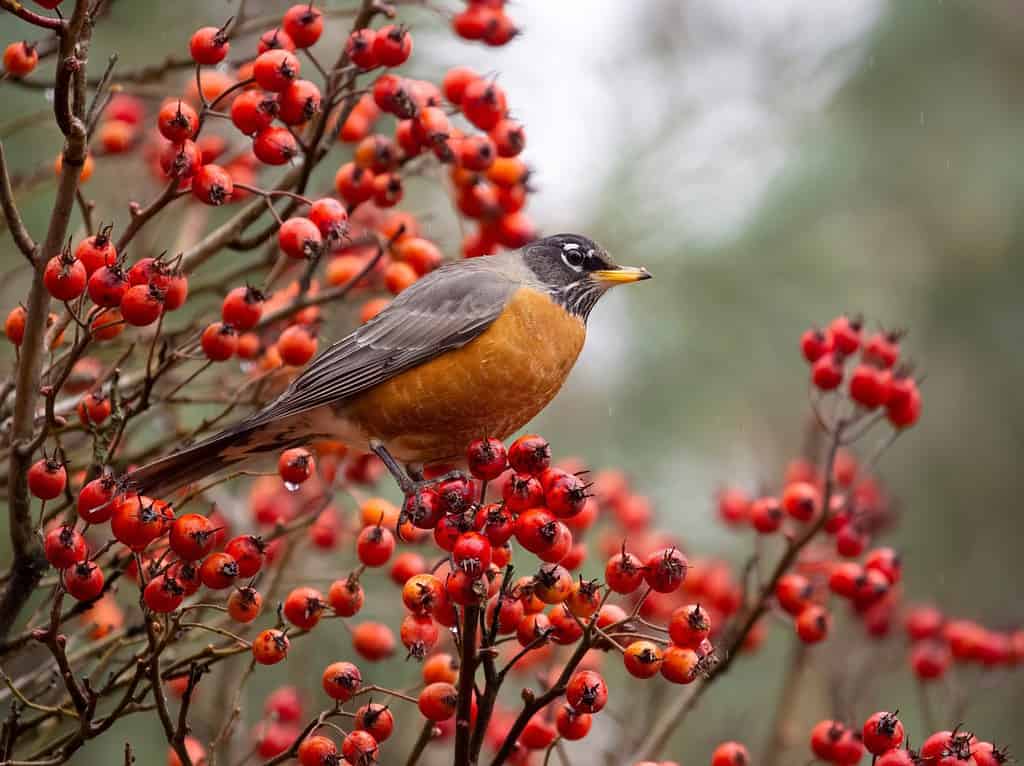
American robins rely heavily on fruits to get them through the winter in most areas.
©Erni/Shutterstock.com
When it comes to overwintering robins, fruit constitutes the vast majority of their diet in most regions — up to over 90 percent! Robins flock to any trees, shrubs, and other flowering plants with at least some fruit that persist into the winter months, including a variety of berries, drupes, and pomes. Here are some of the most commonly consumed types:
Bird Cherry (Padus spp.)
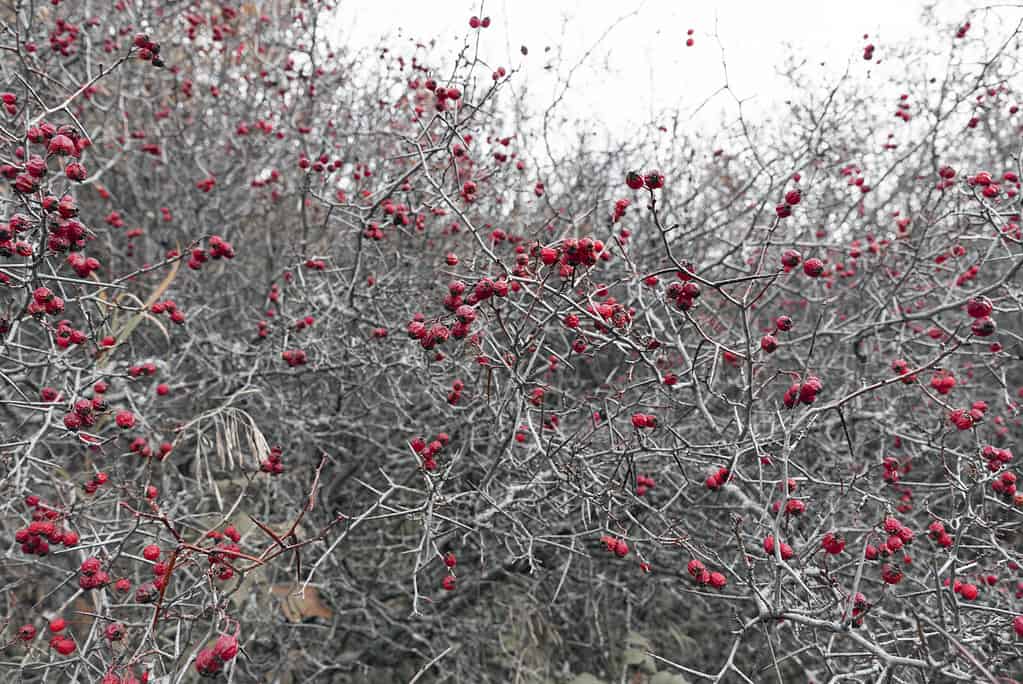
Chokecherry (
Prunus virginiana) is found across the Northern United States and is a popular choice with overwintering robins.
©Brett Holmes Photography/iStock via Getty Images
Cranberry (Oxycoccus spp.)
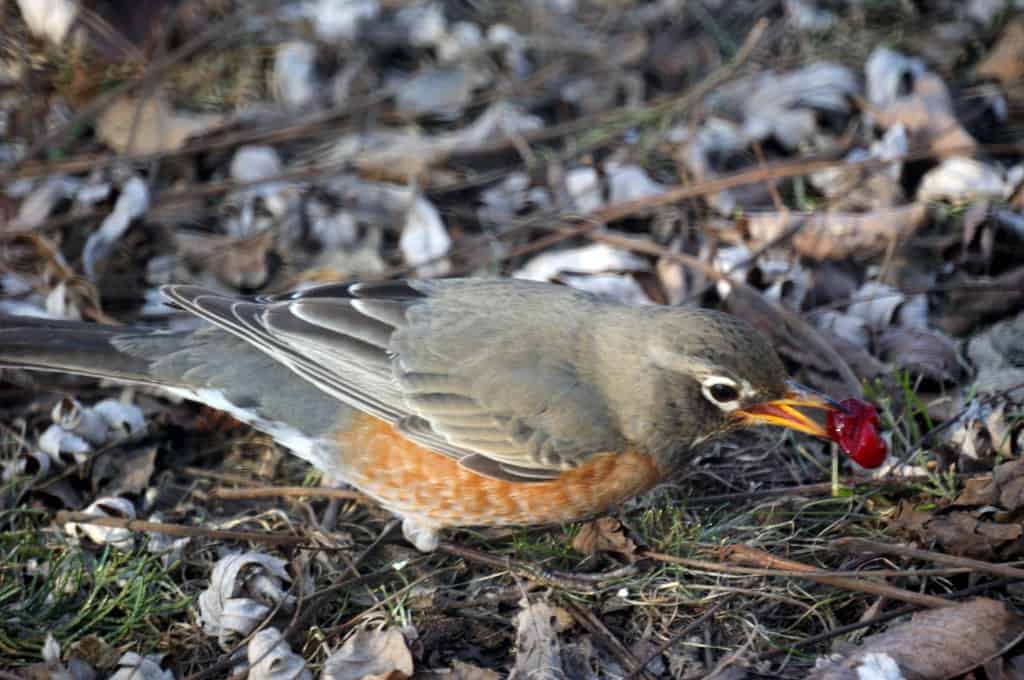
Although often associated with the autumn harvest, cranberries can persist into the winter for hungry robins to find.
©Mike’s Birds / CC BY-SA 2.0 – License
Sumac (Rhus spp.)
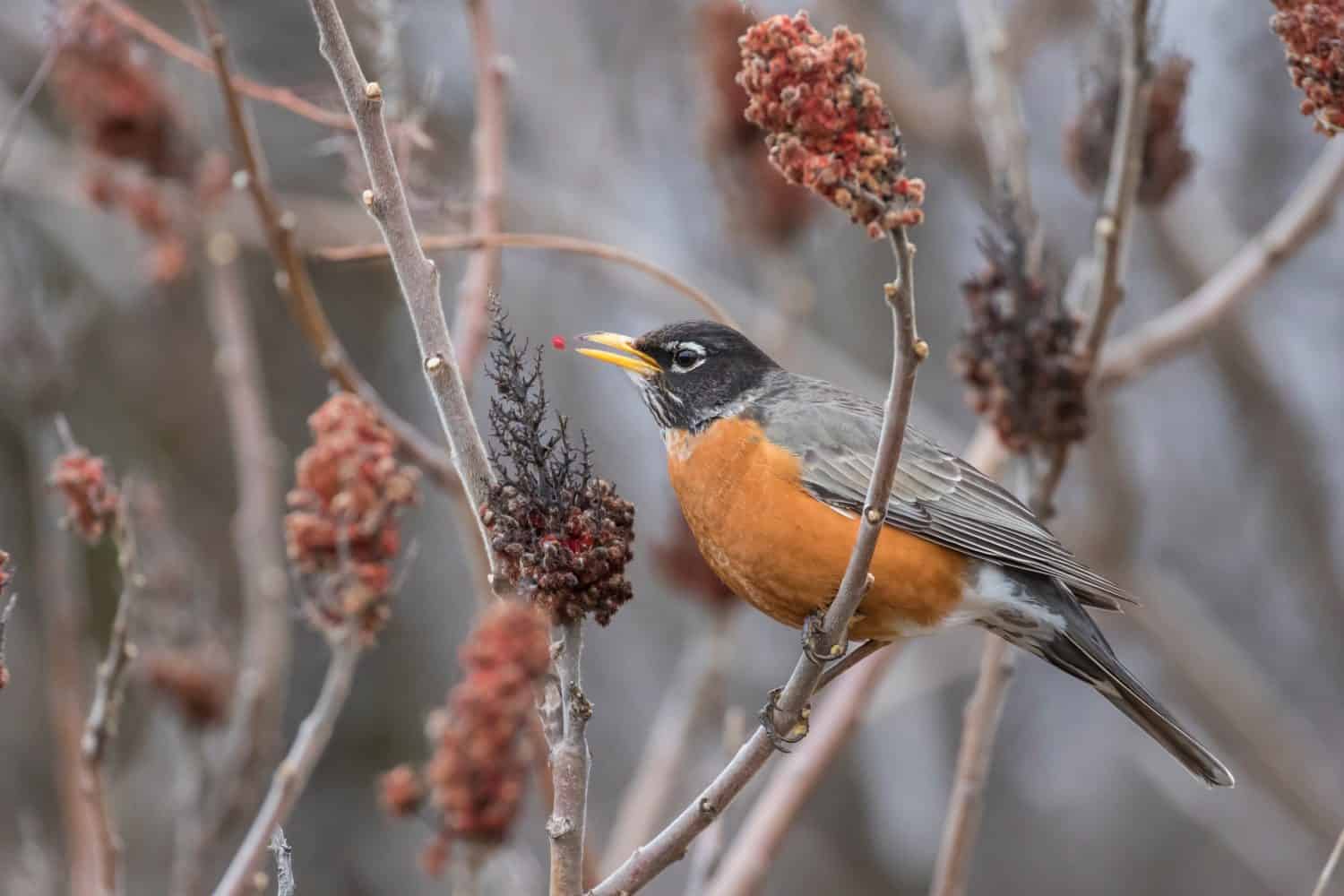
Sumac drupes often remain on branches throughout the winter, making it an important food source for many types of winter wildlife, including robins.
©Mircea Costina/Shutterstock.com
Hawthorn (Crataegus spp.)

Hawthorns are an especially important staple food for robins in the Western United States.
©Thomas G. Barnes, USFWS / CC0 Via Wikimedia Commons – License
Holly (Ilex spp.)

A well-known symbol of the winter holiday season, holly berries are also an important food source for robins.
©Jukka Jantunen/Shutterstock.com
Honeysuckle (Lonicera spp.)
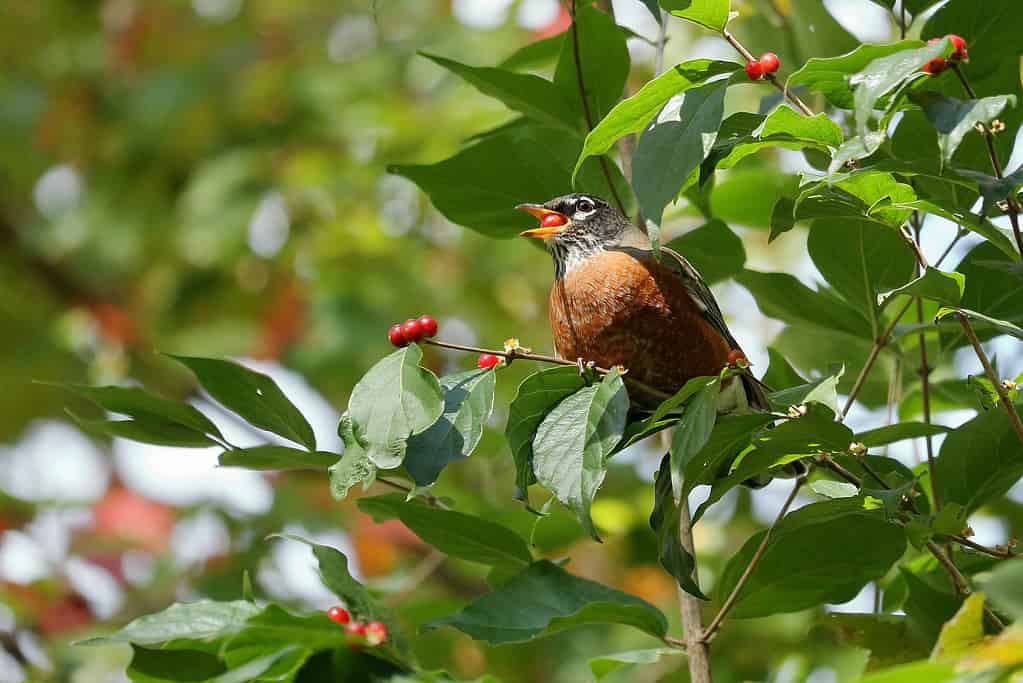
Robins flock to honeysuckle berries, and have been known to become intoxicated from feeding on too many of them!
©MelodyanneM/iStock via Getty Images
Juniper (Juniperus spp.)
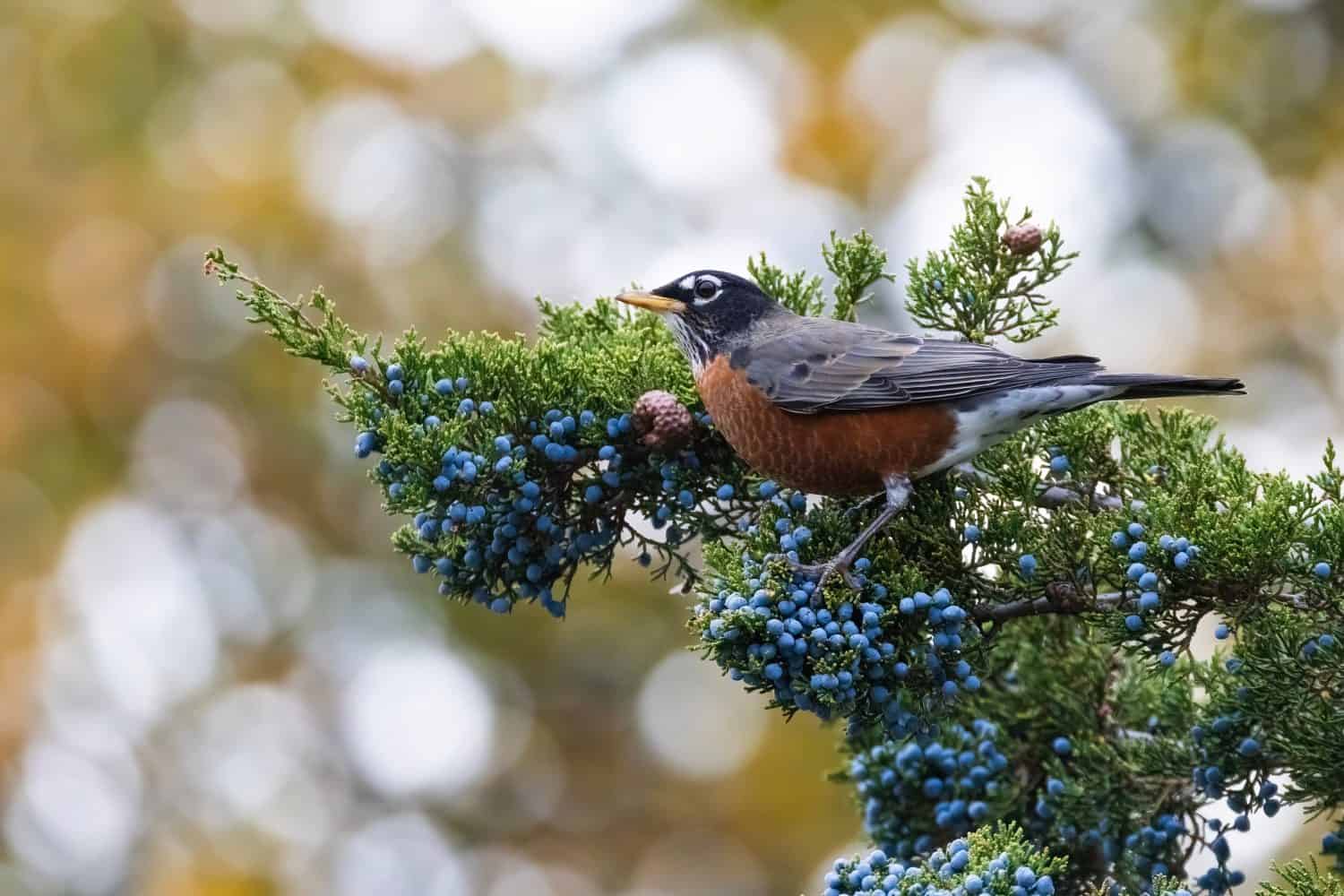
Robins consume large quantities of juniper berries, making them an important seed disperser for these plants.
©Mircea Costina/Shutterstock.com
2. Earthworms, Insects, and Other Invertebrates
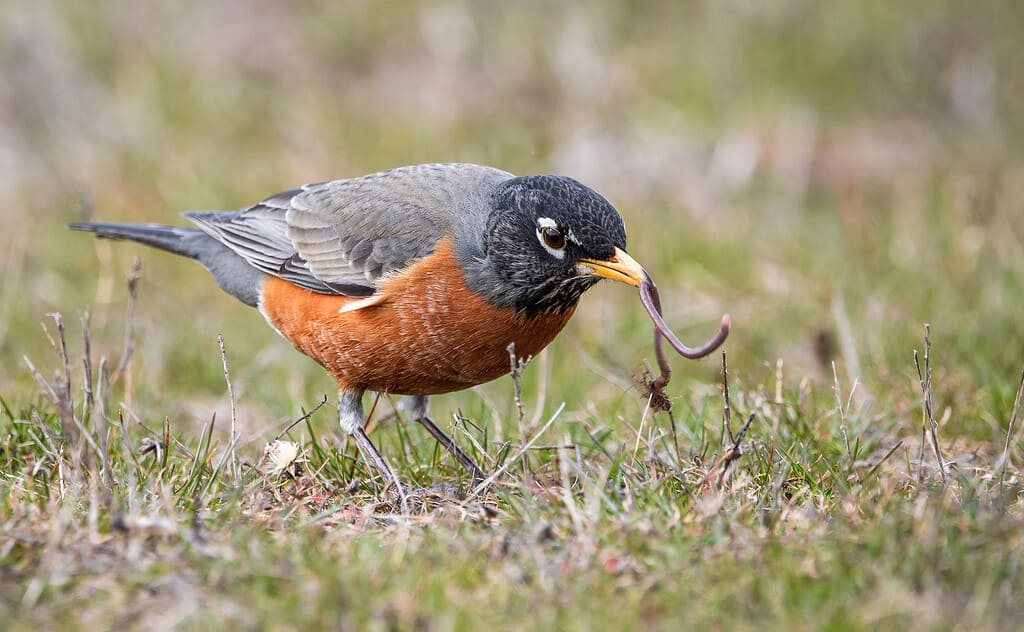
If the ground is unfrozen, robins can continue to dig up earthworms even in winter.
©Mason Maron/iStock via Getty Images
Outside of areas that are warm year-round, invertebrate food items are scarce in winter in many parts of the robin’s native range. However, robins will take advantage of warmer winter days to hunt for any invertebrates that become available, such as earthworms and insects.
3. Bird Feeders

Bird feeders that include mealworms are more likely to attract robins.
©Simon J Beer/iStock via Getty Images
Finally, as more people provide bird feeding stations year-round, robins can enjoy additional food offerings to help them get through the winter. If you want to attract robins to your feeders, include mealworms or fruits such as cranberries or raisins in your mix. You can also try offering small amounts of fresh or frozen fruit in separate feeders.
Summary of What Do Robins Eat In The Winter? 3 Common Foods
| Winter Food Source | Examples |
|---|---|
| 1. Winter Fruits | will hunt for any invertebrates still available in the area (e.g., earthworms, insects) |
| 2. Invertebrates | will hunt for any invertebrates still available in area (e.g., earthworms, insects) |
| 3. Bird Feeders | mixes with mealworms and/or fruits (cranberries, raisins, etc.); fresh or frozen fruit dishes |
The photo featured at the top of this post is © Bonnie Taylor Barry/Shutterstock.com
Thank you for reading! Have some feedback for us? Contact the AZ Animals editorial team.






